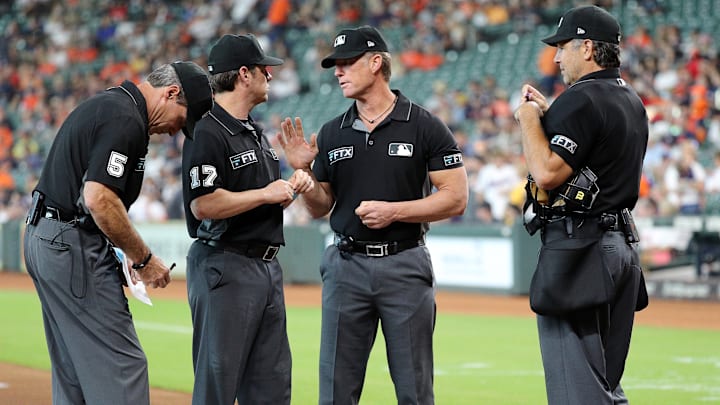Umpires have received flak for a very long time. It isn't an easy job, that's for sure. Being stuck behind home plate in a game where the bottom dwellers of baseball are playing a meaningless game in the middle of the day in August makes it tough to be perfect at your job.
In order to combat inconsistent and irregular strike zones, Major League Baseball implemented an electronic strike zone in AAA leagues this year. The automatic ball and strike system, or ABS, has been in use all year in AAA leagues and was used at last year's Arizona Fall League. It has changed the way at-bats go in AAA games.
There are two forms of the ABS: the first is a full ABS in which all pitch calls are made by a Hawk-Eye system that instantaneously relays balls and strikes to the home plate umpire who then makes that call. In a partial-ABS format, the umpire calls balls and strikes like normal, but players have the (limited) ability to challenge a call that has been made. The first system is used during weekday games, while the latter system is used during weekend games.
Most recently, MLB made the zone more unique for each batter. Before this update, batters with the same height would have the same strike zone. But, not all batters stand the same size in the batter's box. Hawk-Eye has made the strike zone different for each player based on their stance and how "tall" they actually stand. In Jayson Stark's recent article on The Athletic (subscription required), he detailed this update. The top of the strike zone, according to Stark, will now be a spot defined as "two baseballs above the midpoint of his hip". Hawk-Eye will determine this point, and then mark that as the top of the zone.
The question remains: what effect has ABS had on hitters and pitchers? For one, walk rates are significantly higher across all AAA divisions. The average walk rate this year is 12% on the nose for all qualified AAA hitters. Last year, it was only 10.14%. Another area of change has been in whiff rates. The wider the strike zone, the more whiffs batters will experience. Therefore, MLB decided to keep the width of the strike zone at 17 inches, the same width of the plate. Strikeout rates have decreased by nearly 1% from 2022 to 2023 (22.40% to 21.68%).
While ABS isn't expected in the next year or two at the MLB level, it is coming, and it is coming fast. Rob Manfred is a huge proponent of the system, and with the updated CBA, a committee will be responsible for voting on rule changes. The committee is comprised of 4 active players, 6 representatives from MLB, and 1 umpire.
So, prepare yourself for some helmet taps, some small pauses in the game, and the possibility of strike and ball calls to be changed. Given the vitriol some fans have towards certain umpires, perhaps the automatic strike zone will be welcomed by fanbases across the league. Maybe the St. Louis Cardinals could start targeting some patient hitters over the next few offseasons. They were behind the curve when it came to strikeout pitchers and speedy baserunners; hopefully, they can read between the lines on this next rule change.
